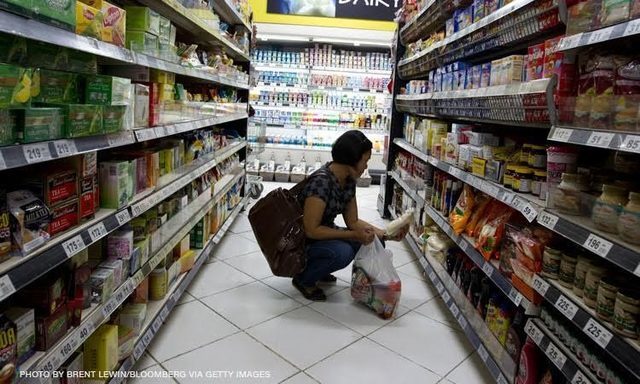THE Department of Tourism (DOT) has targeted a 31.5-percent increase in visitor arrivals from the Middle East to 108,170 in 2019, with Saudi Arabia, the United Arab Emirates (UAE), and Kuwait accounting for the largest shares.
This market, according to DOT Undersecretary for Tourism Development Planning Benito C. Bengzon Jr., is projected to send 77,206 tourists from Saudi Arabia; 23,556 from the UAE; and 7,408 from Kuwait this year.
“Shopping and sightseeing are the main activities of the tourists from the Middle East,” he noted. “And among the main purposes of visit are for pleasure or vacation, business, and visiting friends and relatives.”
‘Silent recession’
This year’s projected arrivals are a turnaround from the 11.34-percent drop to 82,251 in 2018, which a DOT official attributed to a region-wide “silent recession.”
In an interview with the BusinessMirror, Dakila F. Gonzales,
head of DOT’s Office of Product and Market Development for the Middle East,
explained that “Gulf Coast Countries [GCC] are committed to develop their
respective local tourism industries
promoting, pushing and subsidizing inter-regional travel of their nationals.”
He added that European nations are also pushing hard to increase their tourist arrivals such that they are providing buyers “with incentives for luxury inbound travel.”
He also traced the drop in arrivals last year to renovations by Philippine properties preferred by GCC nationals, thus “cutting [room] capacity” of these establishments. Some of these five-star resorts and hotels include Amanpulo and Pangalusian in Palawan, and Maxim’s Hotel in Manila.
Gains from ATM
Nonetheless, Gonzales expressed optimism that the market will bounce back this year, as tourism operators and resorts reported significant gains from their participation at last week’s Arabian Travel Market (ATM).
In a separate interview, Jose C. Clemente III, president of Rajah Tours Philippines, said he and his colleagues were “extremely busy in the first two days,” with buyers looking for “beaches, mountains and greenery, and destinations with cooler temperatures. They also want luxury properties and services.”
As such, his buyers were interested in Boracay, El Nido, northern Luzon, specifically, Baguio.
For her part, Grace Felicitas Agatep, director of Sales and Marketing for Movenpick Resort & Spa, also noted an interest in buyers for Boracay, where her property is located. A key incentive for ATM buyers to choose Movenpick is the property’s cuisine, she said. “We are not halal-certified, but we can offer halal food.”
While there is a strong interest in the Philippines, Clemente pointed out, the GCC market is now asking if there are “Arabic-speaking guides. The more educated ones speak English, like those from the UAE. But those who are requesting for these Arabic-speaking guides are mostly Saudis and from other GCC nations. It’s a new wrinkle.”
Wanted: tourism attaché
This, along with inadequate halal facilities and establishments, are the main challenges to attracting more tourists from the Middle East. “The main issue is really to be able to deliver the needs of the Muslim and Arabic tourists i.e., Halal food and Arabic speakers,” explained Clemente.
“And maybe it’s about time the DOT opens an office [there] to cover the GCC. They cannot have just a market representative,” he said. “If we seriously want to engage the GCC market, the promotions of the DOT have to be organic. A market representative can only do so much.”
Still, Gonzales said the entire delegation to the ATM “is confident that we will be able to swing the GCC arrivals toward an upward trajectory.”
Aside from the mainstream GCC market, the private stakeholders are also targeting the expatriates and the Filipinos working there. “Philippine arrivals from both segments do not appear in the Philippine tourism arrival statistics, as we count not the residency but the nationality,” he averred. “In other words, although there was a decrease in Philippine arrivals from GCC, the business generated through our efforts in the region absolutely bore fruit, as seen in the arrivals of other nationalities residing in the Middle East.” Among these were Europeans, Indians, Sri Lankans and Filipinos residing in the Middle East as expats.
Saudi Arabia remains the top source market for the Middle East, with 46,966 tourists accounting for more than half the total market arrivals last year.
In the first two months of 2019, a large chunk of the tourists from the market were accounted for by Saudi Arabia (6,670); UAE (1,953); and Kuwait (1,110). There were 28 private travel companies, which joined this year’s ATM, up from last year’s 20 participants.
The ATM is the leading global event for the Middle East inbound and outbound travel industry since 1994. Held from April 29 to May 1 at the Dubai International Convention and Exhibition Centre, the event last year attracted 39,185 travel industry professionals and visitors from around the world, and reportedly generated more than $2.5 billion in deals.
Image credits: Contributed photo
































